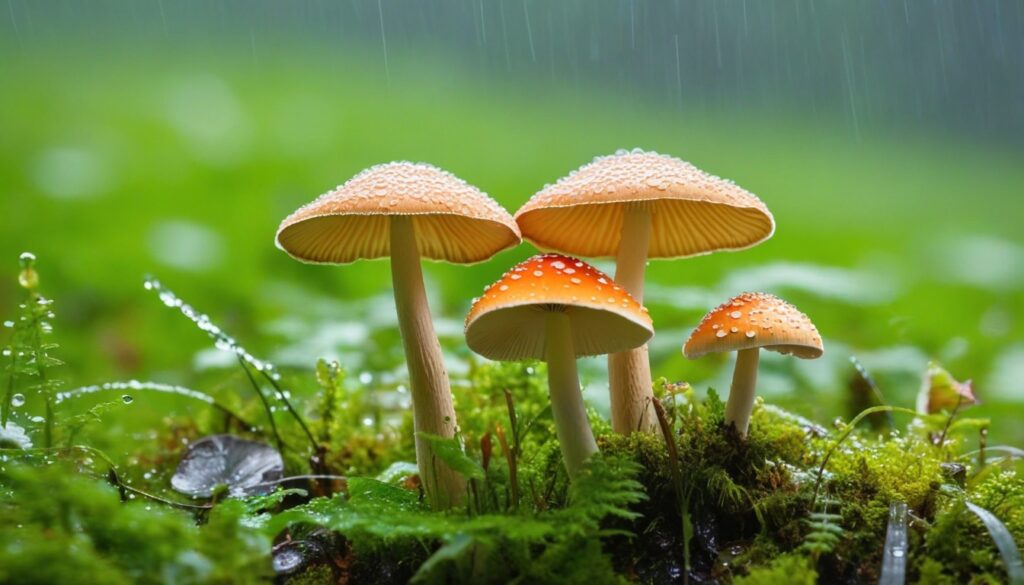Have you ever wondered how mushrooms seem to sprout out of nowhere after a rain shower? The answer lies in their unique lifecycle and their ability to thrive in moist conditions. In this article, we will explore the fascinating world of mushroom growth and examine the factors that contribute to their rapid development after rain.
Key Takeaways:
- Mushrooms grow quickly after rain due to the moisture provided by rainfall.
- The lifecycle of mushrooms is important in understanding their growth patterns.
- Spore germination, mycelium growth, and fruiting body formation are key stages in mushroom growth.
- Factors affecting mushroom growth after rain include species, temperature, humidity, soil composition, and nutrient availability.
- Mushroom foraging after rain can yield a variety of wild mushrooms, but it is important to be knowledgeable about mushroom identification for safety.
The Lifecycle of Mushrooms
In order to understand how mushrooms grow after rain, it is essential to first comprehend their lifecycle. (mushrooms, lifecycle)
The mushroom lifecycle starts with spore germination, which occurs when the spores come into contact with a favorable environment, such as moist soil after a rainfall. (spore germination, mushrooms)
|
Stage |
Description |
|---|---|
|
Spore germination |
When the spores come into contact with a favorable environment, they germinate, leading to the development of mycelium. |
|
Mycelium growth |
The vegetative part of mushrooms grows underground, absorbing nutrients from the soil. |
|
Fruiting body formation |
The visible and reproductive structures of mushrooms form after sufficient mycelium growth, triggered by environmental conditions such as moisture and temperature. |
Understanding the different stages of the mushroom lifecycle can provide insight into the factors that contribute to the speed of mushroom growth after rainfall. (mushrooms, lifecycle)
Spore Germination
The lifecycle of mushrooms begins with spore germination. Spores are the reproductive cells of mushrooms that are dispersed by wind or water. When spores land in a favorable environment, such as moist soil after rain, they undergo a germination process, leading to the development of mycelium.
“Spores are crucial for mushroom growth, and they can remain dormant for long periods until the right conditions for germination are met.”
A spore consists of a single cell that contains all the genetic information necessary for mushroom development. The outer layer of a spore is tough and resilient, enabling it to survive harsh conditions. However, when a spore lands on a suitable surface, it absorbs water, causing the outer layer to break down, and the cell wall to expand, initiating germination.
The growth of mycelium from spores can be influenced by various factors such as temperature, humidity, and nutrient availability. Each species of mushroom requires specific environmental conditions for optimal growth. For example, some species grow well in cool and damp environments, while others require warmer temperatures.
Mycelium Growth
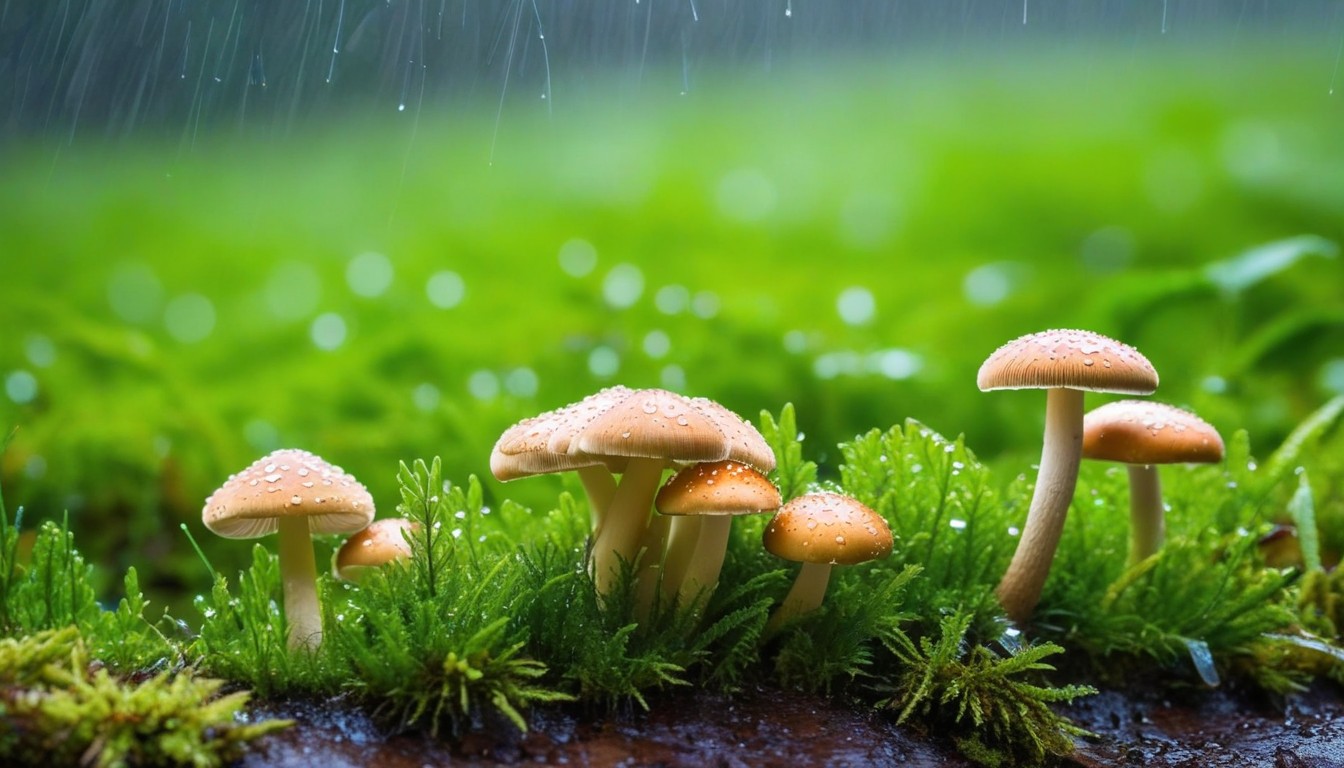
After spore germination, mycelium starts to expand, absorbing nutrients from the soil. The mycelium is composed of a network of fine threads called hyphae. These tiny structures act as root-like structures, which help the mushroom absorb water and nutrients from the surrounding soil.
The mycelium’s growth rate varies depending on various environmental factors such as temperature, humidity, and the availability of nutrients. Generally, mycelium growth is faster in more humid conditions and in nutrient-rich soils.
As the mycelium continues to grow and spread, it forms a complex network of fungal threads that can span several meters underground. This expansion process paves the way for the formation of fruiting bodies, commonly known as mushrooms, which grow rapidly after a rainfall event (as discussed in the previous section).
“Mycelium growth is crucial to the development of mushrooms, as it acts as a foundation for the formation of fruiting bodies.”
Understanding the mycelium’s growth patterns is essential for mushroom cultivation, as it plays a vital role in determining the crop’s overall yield. Controlling the mycelium’s growth rate through environmental manipulation can increase the yield and quality of mushroom production.
Fruiting Body Formation
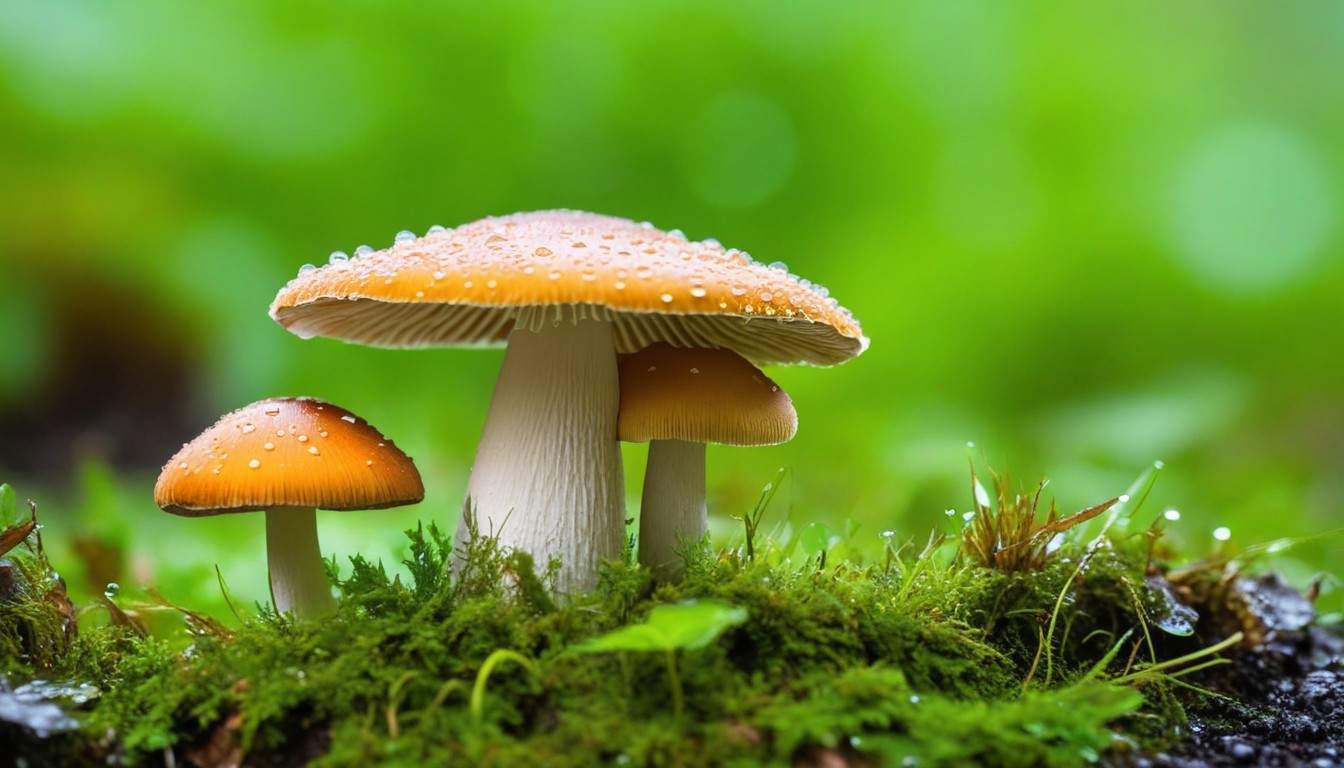
Fruiting bodies, commonly known as mushrooms, are the visible and reproductive structures of fungi.
“The mushroom is the reproductive structure, but the real body of the fungus is the mycelium,” says Eugenia Bone, author of Mycophilia: Revelations From the Weird World of Mushrooms.
After sufficient mycelium growth, the environmental conditions, including moisture and temperature, stimulate the initiation of fruiting body formation.
The fruiting body contains the spore-producing structures, which will eventually be dispersed to start the lifecycle anew. The umbrella-shaped mushroom cap is the most recognizable part of the fruiting body, while the stem or stalk anchors the cap to the ground.
|
Fruiting Body Structure |
Function |
|---|---|
|
Cap |
Protects spore-producing structures |
|
Gills |
Provide a surface for spore release |
|
Stalk |
Anchors the cap to the ground |
The appearance of the fruiting body can vary depending on the species of mushroom. Some can be small and delicate, while others can grow to be several feet tall. The size, shape, and color of the fruiting body all play important roles in species identification.
The role of rain in fruiting body formation cannot be overstated. The moisture provided by rainwater is crucial for the development of the fruiting body and for the spores’ dispersal.
In the next section, we will explore the impact of rain on mushroom growth.
Impact of Rain on Mushroom Growth
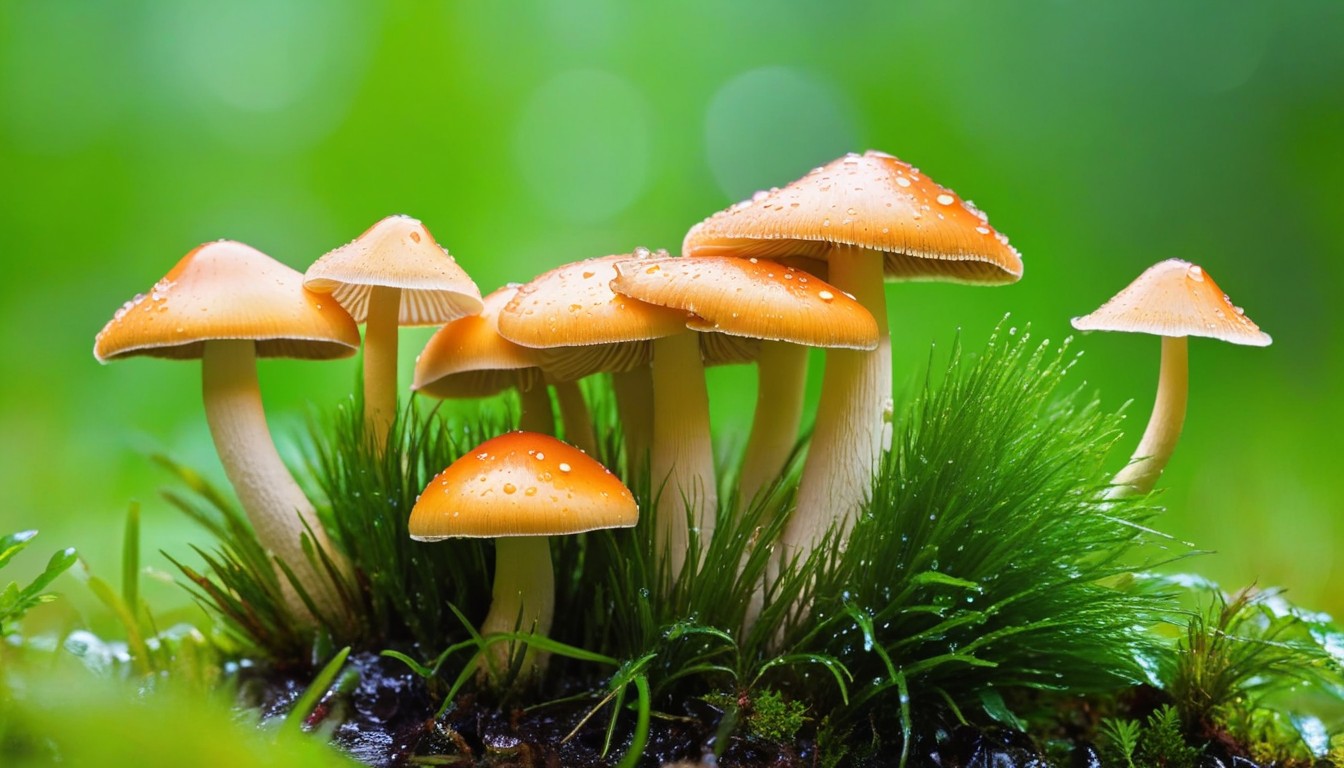
Rain is a critical trigger for mushroom growth. The moisture from rainwater hydrates the mycelium, promoting the expansion of fungal networks and accelerating the production of fruiting bodies. The timing and intensity of rain can influence the speed at which mushrooms appear after a rainfall event.
“Rain is like a steroid for mushrooms. The more it rains, the faster they grow” – John, a mushroom enthusiast.
A study conducted by the University of Illinois found that mushrooms grew significantly faster and had higher yields when irrigated with rainwater compared to tap water. This highlights the importance of rain for optimal mushroom growth.
|
Rain Frequency |
Mushroom Growth |
|---|---|
|
Heavy rainfall every 1-2 weeks |
Very rapid growth |
|
Light rainfall every 1-2 weeks |
Moderate growth |
|
No rainfall |
Very slow growth |
The impact of rain on mushroom growth is not only limited to the quantity but also the quality of mushrooms. Research has found that mushrooms grown after rain have a better taste and texture due to the higher water content.
In conclusion, rain plays a vital role in the growth of mushrooms. Its impact on the hydration and expansion of mycelium networks accelerates the production of fruiting bodies. The frequency and intensity of rainfall are key factors that affect the speed and quality of mushroom growth.
Factors Affecting Mushroom Growth After Rain
The rate at which mushrooms grow after rain depends on several factors. Understanding these factors can provide insights into why some types of mushrooms grow faster than others. The factors affecting mushroom growth after rain are:
|
Factor |
Description |
|---|---|
|
Species of mushrooms |
Each species of mushrooms has its own growth requirements and environmental preferences. |
|
Temperature |
The temperature affects the metabolic rate of mushrooms. They grow best in cool and moist conditions. |
|
Humidity |
The moisture content in the atmosphere and soil affects the growth rate of mushrooms. High humidity levels promote rapid growth. |
|
Soil composition |
Soil pH, texture, and nutrient availability affect the growth of mushrooms. They require a well-drained soil rich in organic matter. |
|
Availability of nutrients |
The availability of essential nutrients such as nitrogen, phosphorus, and potassium affects the growth rate of mushrooms. |
By understanding the factors that affect mushroom growth after rain, it is possible to identify the best areas to look for mushrooms and determine the ideal time to go mushroom foraging.
Rapid Growth of Mushrooms After Rain
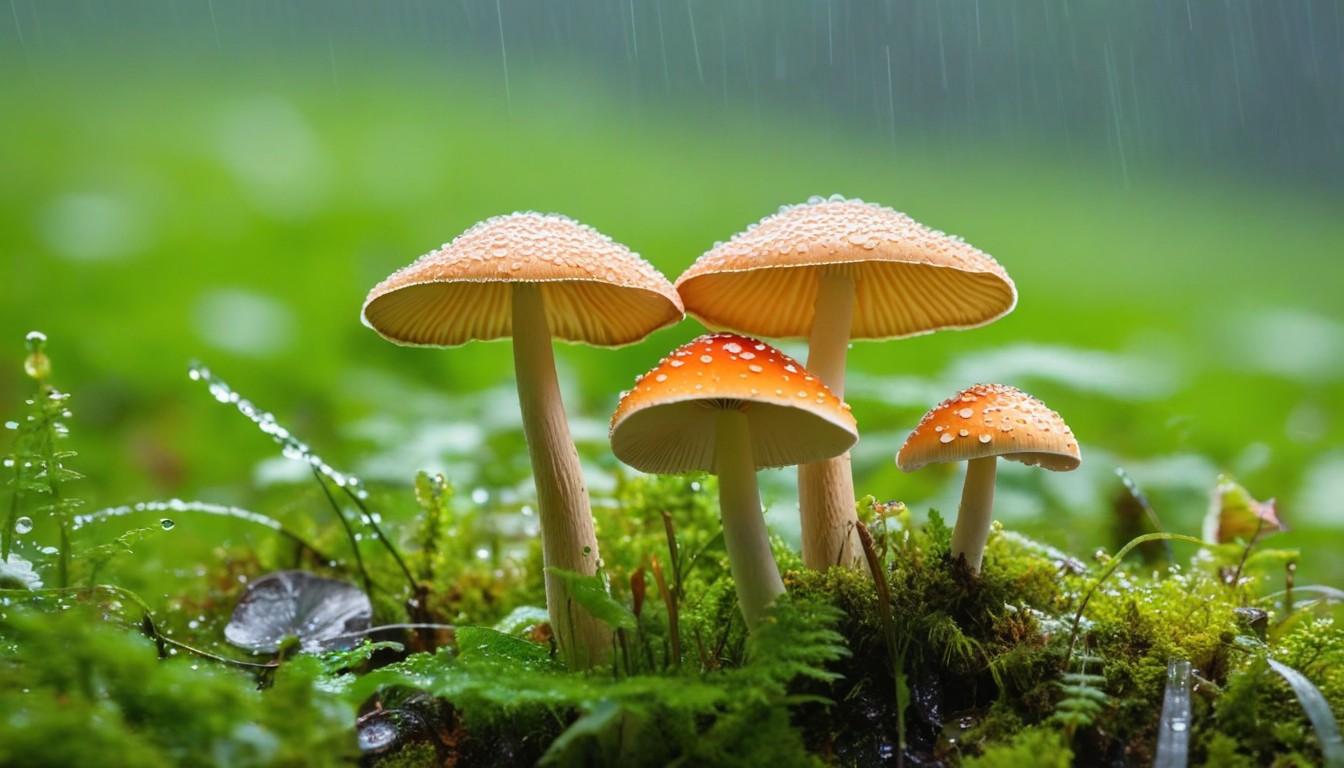
The increased moisture from rainwater is the primary trigger for mushroom growth. Combined with the presence of nutrients in the soil, mushrooms can undergo rapid development within a few days of rainfall. The rate of growth is influenced by several factors, including the species of mushrooms, temperature, humidity, and soil composition.
After the spores germinate, mycelium growth begins, and the fungal network expands underground, absorbing nutrients from the soil. When the environmental conditions are favorable, fruiting body formation occurs, leading to the production of mushrooms. The timing and intensity of rainfall can significantly impact mushroom growth speed.
It is not uncommon to see mushrooms sprouting overnight after a rainfall event, and within a few days, they can reach maturity. In fact, some species of mushrooms grow so rapidly that their growth is visible to the naked eye.
“The miracle of the mushroom is not necessarily that it grows in the wild, but that these strange organisms have the unique ability to recycle organic matter, turning decomposing debris into fertile soil.”
Observing the rapid growth of mushrooms after rain can be a fascinating experience, but it is essential to exercise caution when foraging for wild mushrooms. Proper identification is crucial to ensure that only safe and edible mushrooms are consumed.
Enjoying Mushroom Foraging After Rain
If you have a passion for mushroom foraging, then there’s no better time to do it than after a rainfall. The increased moisture in the air and soil creates an ideal environment for mushrooms to grow and flourish, providing ample opportunities for you to discover a variety of fungi.
But before you set out, it’s important to be knowledgeable about mushroom identification. Not all mushrooms are safe to eat, and some can be poisonous or deadly if ingested. Take the time to research the different species of mushrooms in your area and learn how to identify them accurately.
|
Tip |
Bring along a field guide or download a reliable mushroom identification app to help you spot the different types of mushrooms. |
|---|
When you’re ready to head out, be sure to dress appropriately. Wear clothes and shoes that can withstand moisture and mud, as well as protect you from any potential hazards, such as thorns or insects.
Once you’re in the field, keep your eyes peeled for any signs of mushroom growth. Look for areas with damp soil, fallen logs, and decaying plant matter, as these are prime locations for mushroom growth.
- Keep a basket or bag handy to collect the mushrooms you find, but avoid using plastic bags as they can cause the mushrooms to sweat and spoil.
- Remember to only take what you need and leave some mushrooms behind for others and for the ecosystem.
- Always cook mushrooms thoroughly before consuming, as this can help eliminate any potential toxins or impurities.
Note: Mushroom foraging can be a fun and rewarding hobby, but it’s important to take the necessary precautions and never consume any mushroom unless you are 100% certain of its identification and safety.
By following these tips and being aware of your surroundings, mushroom foraging after rain can be a delightful experience that allows you to connect with nature and enjoy its bounties.
Conclusion
In conclusion, mushrooms are fascinating organisms that thrive in moist environments. The growth of mushrooms after rain is a natural process driven by the interplay of spore germination, mycelium growth, and fruiting body formation. By understanding the lifecycle of mushrooms, we can appreciate the rapid development they undergo after rain.
The impact of rain on mushroom growth is significant, as it triggers the necessary moisture for mycelium expansion and the initiation of fruiting body formation. The environmental factors that affect mushroom growth after rain include species of mushrooms, temperature, humidity, soil composition, and nutrient availability.
Enjoying Mushroom Foraging After Rain
If you’re a mushroom enthusiast, you can take advantage of the post-rain period to go foraging for wild mushrooms. The increased moisture in the environment enhances the chances of finding a variety of mushrooms that have sprung up overnight. However, it is crucial to be knowledgeable about mushroom identification to ensure safety.
Appreciate Nature’s Wonders
Mushrooms are remarkable organisms that play an essential role in the ecosystem. Understanding their growth patterns and the influence of rain on their development can deepen our appreciation for the wonders of nature’s cycle. Next time you see mushrooms sprouting after a rainfall, take a moment to marvel at how they quickly appeared.
FAQ
How fast do mushrooms grow after rain?
The growth rate of mushrooms after rain can vary depending on various factors such as mushroom species, environmental conditions, and the intensity of the rainfall. In ideal conditions, mushrooms can grow rapidly within a few days of rainfall, reaching maturity and ready for spore dispersal.
What factors contribute to mushroom growth after rain?
Several factors influence the speed at which mushrooms grow after rain. These include the species of mushrooms, temperature, humidity, soil composition, and the availability of nutrients. Understanding these factors can provide insights into why mushrooms thrive after rainfall events.
Why do mushrooms grow faster after rain?
Rainwater is essential for mushroom growth as it provides the necessary moisture that hydrates the mycelium, which promotes the expansion of fungal networks and accelerates the production of fruiting bodies. The timing and intensity of rain can also impact the speed at which mushrooms appear after rainfall.
Can I go mushroom foraging after rain?
Yes, the post-rain period is often an excellent time for mushroom foraging. The increased moisture in the environment enhances the chances of finding a variety of mushrooms that have sprung up overnight. However, it is crucial to have knowledge about mushroom identification to ensure safety.

